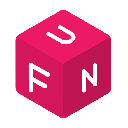-
 Bitcoin
Bitcoin $82,666.6102
-0.79% -
 Ethereum
Ethereum $1,784.7960
-1.02% -
 Tether USDt
Tether USDt $0.9996
0.02% -
 XRP
XRP $2.1257
-0.64% -
 BNB
BNB $592.3902
-0.42% -
 USDC
USDC $0.9999
0.02% -
 Solana
Solana $117.4685
-1.68% -
 Dogecoin
Dogecoin $0.1672
-1.55% -
 Cardano
Cardano $0.6486
-2.86% -
 TRON
TRON $0.2388
-0.62% -
 Chainlink
Chainlink $12.6264
-1.48% -
 UNUS SED LEO
UNUS SED LEO $8.9748
-4.45% -
 Toncoin
Toncoin $3.2369
-5.07% -
 Stellar
Stellar $0.2523
-3.16% -
 Avalanche
Avalanche $17.8476
-2.45% -
 Shiba Inu
Shiba Inu $0.0...01211
-1.64% -
 Sui
Sui $2.1892
-2.55% -
 Hedera
Hedera $0.1597
-3.77% -
 Litecoin
Litecoin $82.3531
-1.88% -
 Polkadot
Polkadot $3.9109
-4.55% -
 MANTRA
MANTRA $6.2589
-1.98% -
 Bitcoin Cash
Bitcoin Cash $297.7127
-1.02% -
 Dai
Dai $1.0001
0.04% -
 Bitget Token
Bitget Token $4.4351
-2.15% -
 Ethena USDe
Ethena USDe $0.9991
-0.03% -
 Pi
Pi $0.6450
21.59% -
 Monero
Monero $216.0365
0.55% -
 Hyperliquid
Hyperliquid $11.4792
-0.63% -
 Uniswap
Uniswap $5.8107
-0.91% -
 OKB
OKB $50.4811
4.99%
What types of blockchain forks are there?
Blockchain forks arise from protocol rule modifications, bug fixes, or transaction reversals, leading to potential creation of new cryptocurrencies, market volatility, and community division.
Feb 18, 2025 at 12:31 pm
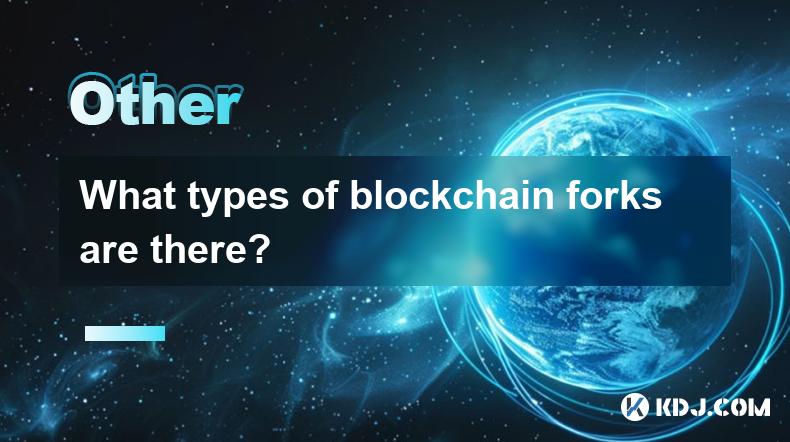
Key Points:
- Types of blockchain forks: hard fork, soft fork, contentious fork, non-contentious fork
- Why blockchain forks occur: to change the protocol rules, to fix bugs, to roll back transactions
- How blockchain forks work: nodes split into different factions, one following the new rules and the other following the old rules
- Effects of blockchain forks: can create two new cryptocurrencies, can lead to market volatility
What are the different types of blockchain forks?
Hard fork
A hard fork is a permanent change to the blockchain protocol rules. Once a hard fork occurs, the blockchain splits into two separate chains. Nodes on the new chain follow the new rules, while nodes on the old chain continue to follow the old rules. Hard forks are often used to implement major changes to a cryptocurrency, such as adding new features or changing the consensus algorithm.
Soft fork
A soft fork is a change to the blockchain protocol rules that is backwards compatible. This means that nodes running the old software will still be able to communicate with nodes running the new software. Soft forks are often used to implement minor changes to a cryptocurrency, such as bug fixes or performance improvements.
Contentious fork
A contentious fork is a hard fork that is not supported by all of the nodes on the network. This can lead to a split in the community, with some users supporting the new chain and others supporting the old chain. Contentious forks can be caused by disagreements over the direction of the cryptocurrency or by technical issues.
Non-contentious fork
A non-contentious fork is a hard fork that is supported by all of the nodes on the network. This type of fork is typically used to implement major changes to a cryptocurrency that are not controversial.
Why do blockchain forks occur?
Blockchain forks can occur for a variety of reasons, including:
- To change the protocol rules: Hard forks are often used to implement major changes to the blockchain protocol rules. This can be done to add new features, change the consensus algorithm, or fix bugs.
- To fix bugs: Soft forks can be used to fix bugs in the blockchain software. This can be done without causing a split in the network.
- To roll back transactions: In some cases, a blockchain fork can be used to roll back transactions that have been made on the blockchain. This can be done if the transactions were made in error or if they were fraudulent.
How do blockchain forks work?
When a blockchain fork occurs, the nodes on the network split into two separate factions. One faction follows the new rules, while the other faction follows the old rules. This can lead to two different versions of the blockchain, each with its own set of transactions and blocks.
In the case of a hard fork, the two factions will not be able to communicate with each other. This means that any transactions that are made on one chain will not be recognized by the other chain.
In the case of a soft fork, the two factions will still be able to communicate with each other. This means that any transactions that are made on one chain will be recognized by the other chain. However, the old software will not be able to process transactions that use the new rules.
Effects of blockchain forks
Blockchain forks can have a number of different effects, including:
- Can create two new cryptocurrencies: Hard forks can create two new cryptocurrencies, each with its own set of rules and features.
- Can lead to market volatility: Blockchain forks can lead to market volatility, as the prices of the two new cryptocurrencies fluctuate.
- Can cause confusion: Blockchain forks can cause confusion among users, as they may not know which chain to support.
FAQs:
- What is the difference between a hard fork and a soft fork?
A hard fork is a permanent change to the blockchain protocol rules, while a soft fork is a backwards compatible change.
- What causes blockchain forks?
Blockchain forks can be caused by a variety of reasons, including to change the protocol rules, to fix bugs, or to roll back transactions.
- How do blockchain forks work?
When a blockchain fork occurs, the nodes on the network split into two separate factions, one following the new rules and the other following the old rules.
- What are the effects of blockchain forks?
Blockchain forks can create two new cryptocurrencies, lead to market volatility, and cause confusion among users.
Disclaimer:info@kdj.com
The information provided is not trading advice. kdj.com does not assume any responsibility for any investments made based on the information provided in this article. Cryptocurrencies are highly volatile and it is highly recommended that you invest with caution after thorough research!
If you believe that the content used on this website infringes your copyright, please contact us immediately (info@kdj.com) and we will delete it promptly.
- Aptos (APT) Spot ETF Application by Bitwise Asset Management Sparks Fresh Excitement in the Crypto Market
- 2025-04-06 00:20:12
- Bitcoin and Ethereum Prices End Q1 of 2025 in the Red
- 2025-04-06 00:20:12
- CryptoQuant Reveals the Growing Influence of “New Whales” in the Bitcoin Market
- 2025-04-06 00:15:12
- NoviqTech Tokenizes Recycled Amines on Hedera Network
- 2025-04-06 00:15:12
- FX Guys (FXG) Token, The Next 100x Altcoin
- 2025-04-06 00:10:12
- DePIN track leader Roam will participate as a primary sponsor in the 2025 Hong Kong Web3 Carnival
- 2025-04-06 00:10:12
Related knowledge
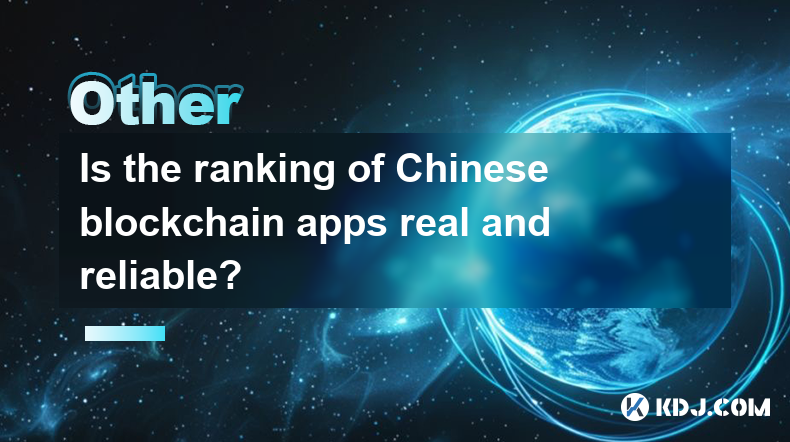
Is the ranking of Chinese blockchain apps real and reliable?
Apr 04,2025 at 09:01pm
The ranking of Chinese blockchain apps has become a topic of interest for many in the cryptocurrency community, as it provides insights into the popularity and adoption of blockchain technology within China. However, the reliability and authenticity of these rankings are often questioned. This article aims to delve into the factors that influence these ...
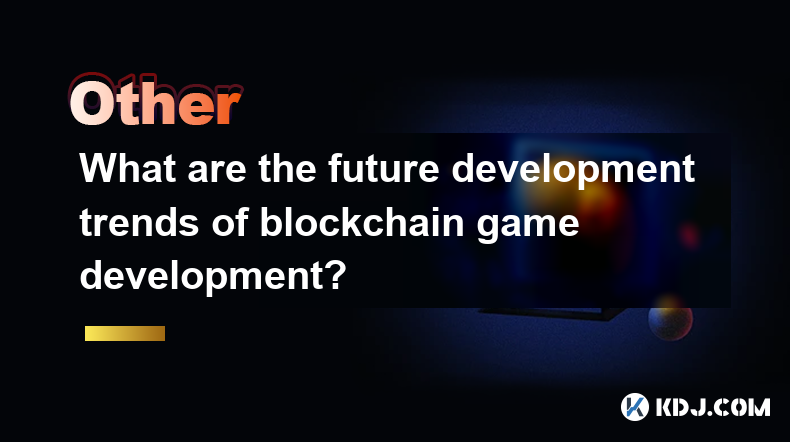
What are the future development trends of blockchain game development?
Apr 03,2025 at 05:00am
Blockchain technology has revolutionized various industries, and gaming is no exception. As we look to the future, several trends are set to shape the development of blockchain games. These trends not only promise to enhance the gaming experience but also to integrate blockchain technology more seamlessly into the gaming ecosystem. Let's explore these t...
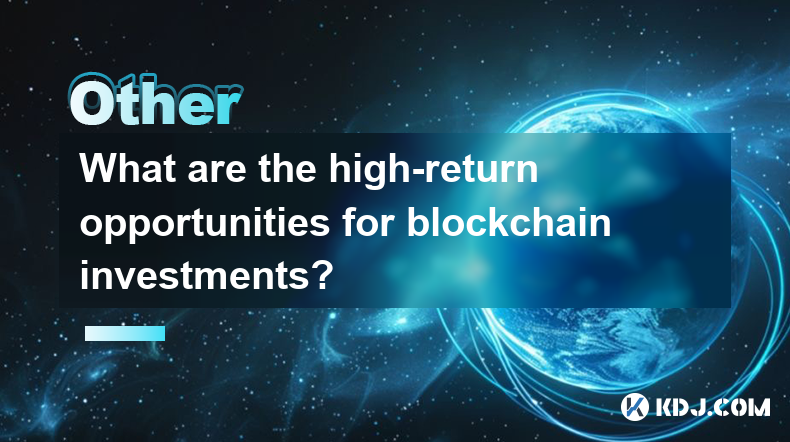
What are the high-return opportunities for blockchain investments?
Apr 05,2025 at 02:35pm
Blockchain technology has revolutionized the financial world, offering numerous high-return investment opportunities. These opportunities span various sectors within the cryptocurrency ecosystem, including cryptocurrencies, decentralized finance (DeFi), non-fungible tokens (NFTs), and blockchain startups. Each of these areas presents unique risks and re...
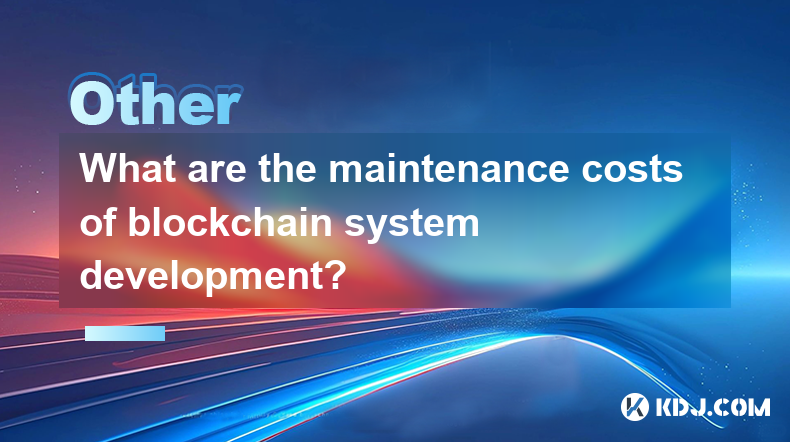
What are the maintenance costs of blockchain system development?
Apr 03,2025 at 06:07pm
The maintenance costs of blockchain system development are multifaceted and depend on various factors. These costs can include technical maintenance, security updates, infrastructure expenses, and personnel costs. Understanding these elements is crucial for anyone planning to develop or maintain a blockchain system. Technical MaintenanceTechnical mainte...
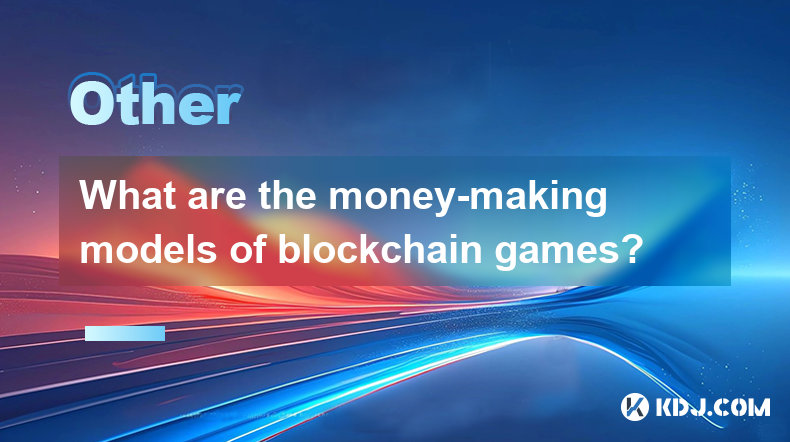
What are the money-making models of blockchain games?
Apr 04,2025 at 02:00pm
Blockchain games have emerged as a revolutionary way for players to earn real money while enjoying their favorite pastime. These games leverage the power of blockchain technology to create unique money-making models that benefit both the players and the developers. In this article, we will explore the various money-making models of blockchain games and ...
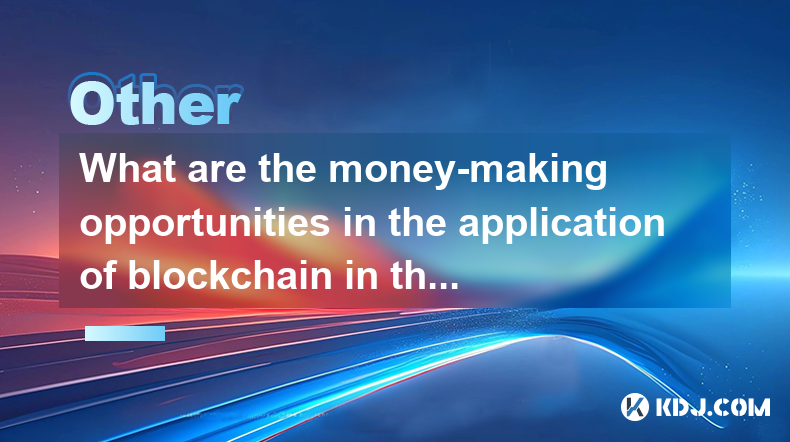
What are the money-making opportunities in the application of blockchain in the field of Internet of Things?
Apr 05,2025 at 10:35pm
The integration of blockchain technology with the Internet of Things (IoT) presents numerous money-making opportunities. Blockchain, with its decentralized and secure nature, can revolutionize how IoT devices interact, manage data, and conduct transactions. This article will explore various avenues where entrepreneurs, developers, and investors can capi...

Is the ranking of Chinese blockchain apps real and reliable?
Apr 04,2025 at 09:01pm
The ranking of Chinese blockchain apps has become a topic of interest for many in the cryptocurrency community, as it provides insights into the popularity and adoption of blockchain technology within China. However, the reliability and authenticity of these rankings are often questioned. This article aims to delve into the factors that influence these ...

What are the future development trends of blockchain game development?
Apr 03,2025 at 05:00am
Blockchain technology has revolutionized various industries, and gaming is no exception. As we look to the future, several trends are set to shape the development of blockchain games. These trends not only promise to enhance the gaming experience but also to integrate blockchain technology more seamlessly into the gaming ecosystem. Let's explore these t...

What are the high-return opportunities for blockchain investments?
Apr 05,2025 at 02:35pm
Blockchain technology has revolutionized the financial world, offering numerous high-return investment opportunities. These opportunities span various sectors within the cryptocurrency ecosystem, including cryptocurrencies, decentralized finance (DeFi), non-fungible tokens (NFTs), and blockchain startups. Each of these areas presents unique risks and re...

What are the maintenance costs of blockchain system development?
Apr 03,2025 at 06:07pm
The maintenance costs of blockchain system development are multifaceted and depend on various factors. These costs can include technical maintenance, security updates, infrastructure expenses, and personnel costs. Understanding these elements is crucial for anyone planning to develop or maintain a blockchain system. Technical MaintenanceTechnical mainte...

What are the money-making models of blockchain games?
Apr 04,2025 at 02:00pm
Blockchain games have emerged as a revolutionary way for players to earn real money while enjoying their favorite pastime. These games leverage the power of blockchain technology to create unique money-making models that benefit both the players and the developers. In this article, we will explore the various money-making models of blockchain games and ...

What are the money-making opportunities in the application of blockchain in the field of Internet of Things?
Apr 05,2025 at 10:35pm
The integration of blockchain technology with the Internet of Things (IoT) presents numerous money-making opportunities. Blockchain, with its decentralized and secure nature, can revolutionize how IoT devices interact, manage data, and conduct transactions. This article will explore various avenues where entrepreneurs, developers, and investors can capi...
See all articles














































































